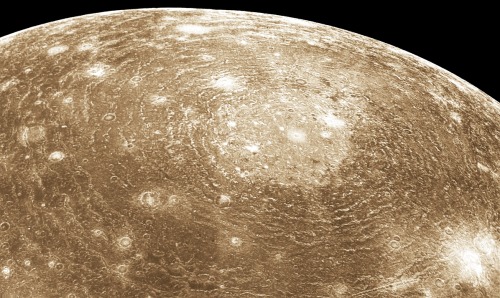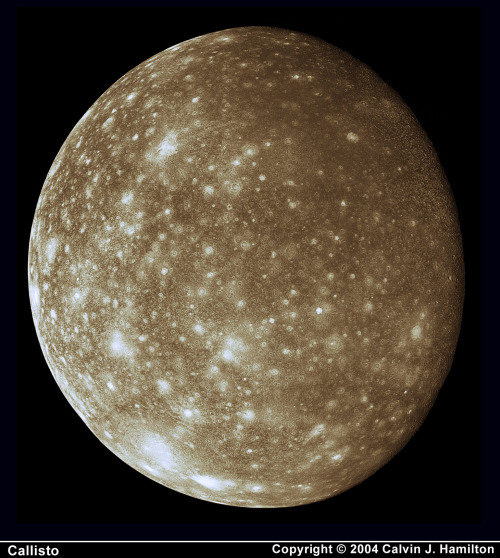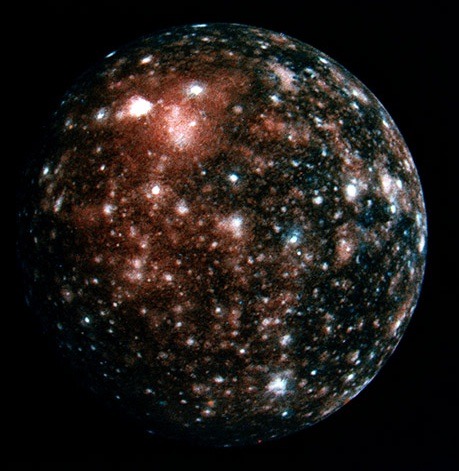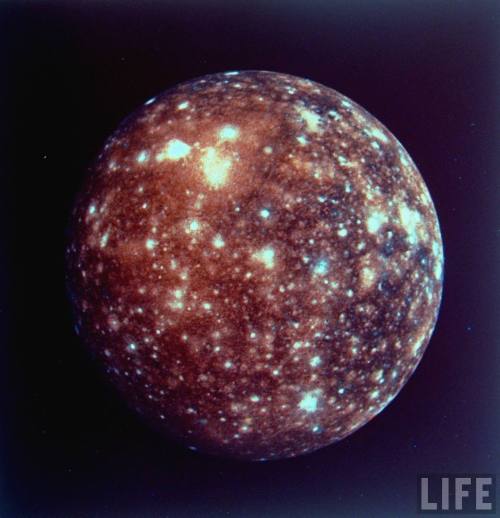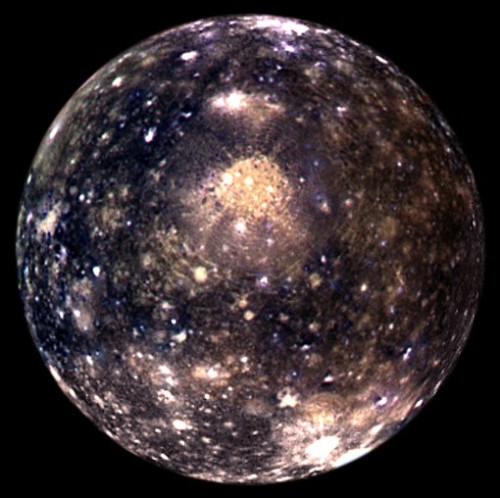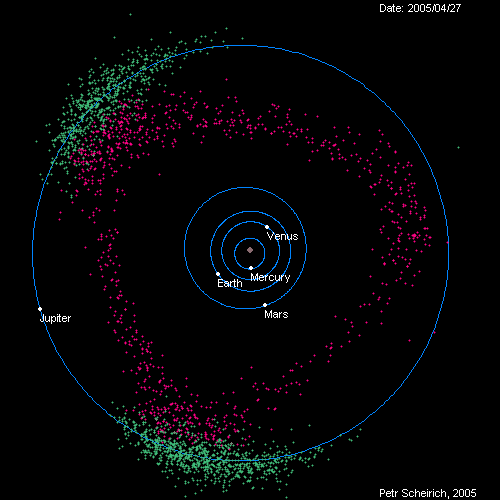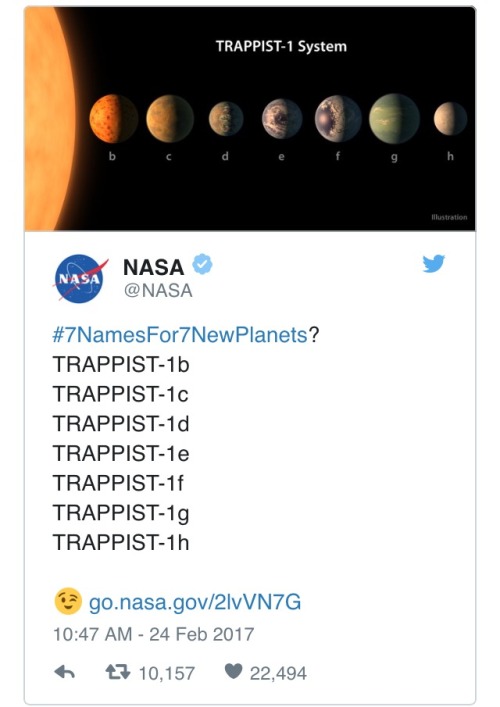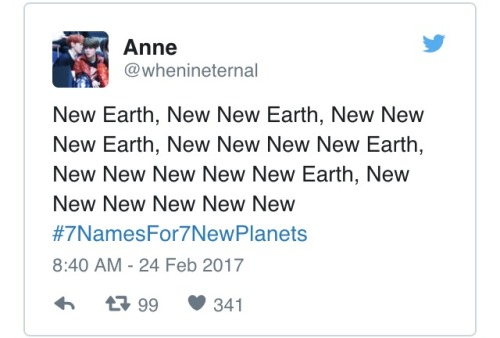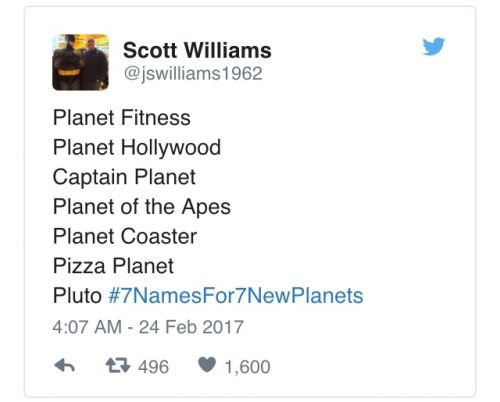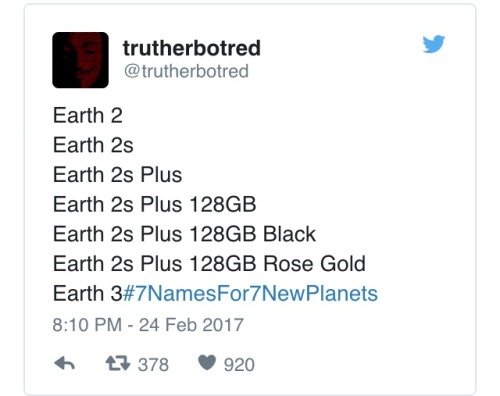Spacewalk Complete And New Astronaut Record Set! Shane Kimbrough and Peggy Whitson of NASA Successfully

Spacewalk complete and new astronaut record set! Shane Kimbrough and Peggy Whitson of NASA successfully reconnected cables and electrical connections on an adapter-3 that will provide the pressurized interface between the station and the second of two international docking adapters to be delivered to the complex to support the dockings of U.S. commercial crew spacecraft in the future. The duo were also tasked with installing four thermal protection shields on the Tranquility module of the International Space Station.
Having completed her eighth spacewalk, Whitson now holds the record for the most spacewalks and accumulated time spacewalking by a female astronaut. Spacewalkers have now spent a total of 1,243 hours and 42 minutes outside the station during 199 spacewalks in support of assembly and maintenance of the orbiting laboratory.
Astronaut Thomas Pesquet of ESA posted this image and wrote, ’ Shane and Peggy on their way to their first #spacewalk tasks.’
Credit: ESA/NASA
More Posts from Fillthevoid-with-space and Others

YO THAT SHIT BALLER AS FUCK HOLY SHIT

The hardest part of determining longitude was figuring out how sailors could find their longitudinal coordinates at sea. There were a lot of methods proposed but adding a ship into the equation makes precision difficult. Learn about the Longitude Act of 1714 and how, even though this podcast loves astronomy, the astronomical method might not always be the best option.
Below the cut are my sources, music credits, a timeline of the astronomers and engineers and clockmakers I mention, a vocab list, a really cool resource that lets you drag continents all over a flattened map of Earth to compare their sizes at different latitudes, and the transcript of this episode. Let me know what you think I should research next by messaging me here, tweeting at me at @HDandtheVoid, or asking me to my face if you know me in real life. And please check out the podcast on iTunes, rate it or review it if you’d like, subscribe, and maybe tell your friends about it if you think they’d like to listen!
(My thoughts on the next episode were the Voyager golden records, space race history, the transit of Venus, or maybe something about the Moon landing. I’m loving Edmond Halley again these days, too. I’m prepping to interview a friend about her graduate-level research into the history of the universe and possibly dark matter, too. Let me know by the 20th and I’ll hopefully have the next podcast up on September 25th! If not then, I’ll push for October 2nd.)
Glossary
azimuth - a section of the horizon measured between a fixed point and the vertical circle passing through the center of an object. See example in the link.
equator - Earth’s zero line of latitude. It’s the place on Earth where the Sun is directly overhead at noon on the vernal and autumnal equinoxes.
kamal - an Arabic navigation tool consisting of a knotted string and a piece of wood. A navigator would tie a knot in the string and, by holding it in their teeth, sight the North Star along the top of the wooden piece and the horizon along the bottom. To return home, the navigator would sail north or south to bring Polaris to the altitude they had observed in their home port, then turn left or right and sail down the latitude, keeping Polaris at a constant angle. Over time, Arab navigators started tying knots at regular intervals of a fingerwidth, called an issbah, that’s about 1 degree and 36 minutes.
magnetosphere - an invisible barrier that surrounds a celestial objet. It is often generated by the movement of the liquid metal core of the object. Around a planet, it deflects high-energy, charged particles called cosmic rays that can either come from the Sun or, less often, from interstellar space.
prime meridian - Earth’s zero degree of longitude. In current maps and time zones, this invisible, imaginary line runs through London, England.
sextant - a device used to determine an observer’s location based on the observation of a known celestial object and a lot of calculation. It is still in use by sailors.
tropic of cancer - a line of latitude that marks where the Sun will be at noon on the summer solstice.
tropic of capricorn - a line of latitude that marks where the Sun will be at noon on the winter solstice.
Script/Transcript
Sources
Longitude at Sea via The Galileo Project at Rice University
Vitamin C necessity via University of Maryland Medical Center
Scurvy via NHS
Scurvy via the Encyclopedia Britannica online
An interactive map that shows how our current map distorts land masses by letting you compare different countries’ sizes.
Sobel, Dava. Longitude. Walker & Co.; New York, 1995.
“anyone living below the Equator would melt into deformity from the horrible heat” (3).
“It simply urged Parliament to welcome potential solutions from any field of science or art, put forth by individuals or groups of any nationality, and to reward success handsomely” (53).
Timeline
Claudius Ptolemy, Greek (100-170 CE)
Johannes Werner (in Latin, Ioannis Vernerus), German (1468-1522)
Tycho Brahe, Danish (1541-1601)
Galileo Galilei, Italian (1564-1642)
Giovanni Cassini (in French, Jean-Dominique Cassini), Italian/French (1625-1712)
Christiaan Huygens, Dutch (1629-1695)
Sir Isaac Newton, English (1642-1726/7)
Ole Rømer, Danish (1644-1710)
John Flamsteed, English (1646-1719)
Edmond Halley, English (1656-1742)
John Hadley, English (1682-1744)
John Harrison, English (1693-1776)
Thomas Godfrey, American (1704-1749)
John Bird, English (1709-1776)
Larcum Kendall, English (1719-1790)
James Cook, English (1728-1779)
Nevil Maskelyne, English (1732-1811)
John Arnold, English (1736-1799)
Thomas Earnshaw, English (1749-1829)
Intro Music: ‘Better Times Will Come’ by No Luck Club off their album Prosperity
Outro Music: ‘Fields of Russia’ by Mutefish off their album On Draught
Here’s a great example of the kinds of experiments astronauts perform on the International Space Station, just like I talked about in Episode 19! I absolutely want to high-five whoever called is ISS-CREAM.
From Frozen Antarctica to the Cold Vacuum of Space
A new experiment that will collect tiny charged particles known as galactic cosmic rays will soon be added to the International Space Station. The Cosmic Ray Energetics And Mass for the International Space Station payload, nicknamed ISS-CREAM, will soon be installed in its new home on the Station’s Japanese Experiment Module Exposed Facility. ISS-CREAM will help scientists understand more about galactic cosmic rays and the processes that produce them.

Wait, what are cosmic rays?
Cosmic rays are pieces of atoms that move through space at nearly the speed of light. Galactic cosmic rays come from beyond our solar system.

They provide us with direct samples of matter from distant places in our galaxy.
Why do these things go so fast?
Galactic cosmic rays have been sped up by extreme processes. When massive stars die, they explode as supernovas. The explosion’s blast wave expands into space along with a cloud of debris.

Particles caught up in this blast wave can bounce around in it and slowly pick up speed. Eventually they move so fast they can escape the blast wave and race away as a cosmic ray.
Where can we catch cosmic rays?
Cosmic rays are constantly zipping through space at these super-fast speeds, running into whatever is in their path – including Earth.

But Earth’s atmosphere is a great shield, protecting us from 99.9 percent of the radiation coming from space, including most cosmic rays. This is good news for life on Earth, but bad news for scientists studying cosmic rays.
So… how do you deal with that?
Because Earth has such an effective shield against cosmic rays, the best place for scientists to study them is above our atmosphere – in space. Since the 1920s, scientists have tried to get their instruments as close to space as possible. One of the simplest ways to do this is to send these instruments up on balloons the size of football stadiums. These balloons are so large because they have to be able to both lift their own weight and that of their cargo, which can be heavier than a car. Scientific balloons fly to 120,000 feet or more above the ground – that’s at least three times higher than you might fly in a commercial airplane!

Credit: Isaac Mognet (Pennsylvania State University)
Earlier versions of ISS-CREAM’s instruments were launched on these giant balloons from McMurdo Station in Antarctica seven times, starting in 2004, for a total of 191 days near the top of the atmosphere. Each of these flights helped the team test their hardware and work towards sending a cutting-edge cosmic ray detector into space!
How is going to space different than flying balloons?
Balloon flights allowed the team to collect a lot of cosmic rays, but even at 120,000 feet, a lot of the particles are still blocked. Scientists at the University of Maryland, College Park, who operate ISS-CREAM, expect to get about 10 times as much data from their new home on the International Space Station.

That’s because it will be both above the atmosphere and fly far longer than is possible with a balloon. As you might imagine, there are large differences between flying something on a balloon and launching it into space. The science instruments and other systems had to be changed so ISS-CREAM could safely launch on a rocket and work in space.
What will ISS-CREAM do?
While on the space station, ISS-CREAM will collect millions of cosmic rays – electrons, protons and atomic nuclei representing the elements found in the solar system. These results will help us understand why cosmic rays reach the wicked-fast speeds they do and, most important, what limits those speeds.
ISS-CREAM launches to the International Space Station aboard the latest SpaceX Dragon spacecraft, targeted to launch August 14. Want to learn more about ISS-CREAM and some of our scientific balloons? Check out our recent feature, NASA’s Scientific Balloon Program Reaches New Heights.
Make sure to follow us on Tumblr for your regular dose of space: http://nasa.tumblr.com

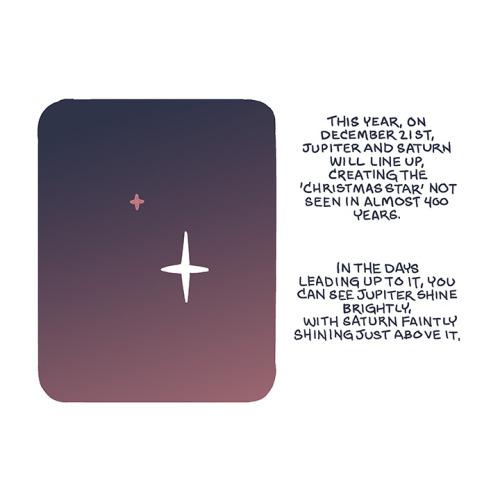

Description: A four panel comic. In the first two panels, me and my father are squinting at the night sky before I brighten and declare that ‘OH! I see it!’ In the next panel is the night sky with two stars. One bright one in the lower right center and a slightly dimmer one just above and to the left of the first one. Text reads: ‘This year, on December 21st, Jupiter and Saturn will line up, creating the ‘Christmas Star’ not seen for almost 400 years. In the days leading up to it, you can see Jupiter shine brightly, with Saturn faintly shining just above it.’ In the final panel I am closing my window and looking up at the sky. Captions read: ‘I keep looking up, finding and refinding it.’ And ‘The planets are always there, but this moment makes it all seem so fleeting.’

The inner planets and the outer planets all look like stars from Earth. They are strange stars that move in strange ways, but their appearance depends on how they relate to observers on Earth. They are also affected by their position in relation to the Sun. Planets experience eclipses as well when the Sun, Earth, and planet are all aligned; in the inner planets, this is called a transit, and this has been a source of vast information about the solar system and the planets’ places in that system. In the outer planets, this eclipsing is called opposition. You get to hear about both in this week’s podcast!
Below the cut, I have the glossary, transcript, timeline of astronomers, sources, and music credits. I take topic suggestions from Tumblr messages, or you can tweet at me on Twitter at @HDandtheVoid, or you can ask me to my face if you know me. Please subscribe on iTunes, rate my podcast and maybe review it, and tell friends if you think they’d like to hear it!
(My thoughts on the next episode are Chuck Yeager, Edmond Halley, Stephen Hawking and his theories, or famous comets. The next episode will go up later in June!)
Glossary
aphelion - a planet’s most distant position from the Sun
black drop effect - an optical illusion where a planet nearing the edge of the Sun appears to be connected to the Sun’s edge by a black teardrop.
conjunction - when the Earth, Sun, and another planet in the solar system are aligned so that Earth and the planet are on opposite sides of the Sun.
node - the point where another planet’s orbit crosses the plane of Earth’s orbit. The planets’ orbits are tilted at slightly different angles from each other; for example, Mercury’s orbit is inclined 7 degrees compared to Earth’s orbit. Because Mercury orbits the Sun once every 88 days, it crosses Earth’s orbit every 44 days at these nodes.
opposition - when one of the outer planets crosses the plane of Earth’s orbit opposite the Sun.
perihelion - a planet’s closest position to the Sun
retrograde - the apparent motion of a planet in a direction opposite to that of other bodies within its system, as observed from a particular vantage point.
syzygy - the straight line between three celestial bodies, usually the Sun to the Earth to another planetary body.
transit - when one of the inner planets crosses between the plane of Earth’s orbit and the Sun.
Script/Transcript
Timeline
Bernhard Walther, German (1430-1504)
Johannes Regiomontanus, German (1436-1476)
Willibald Pirckheimer, German (1470-1530)
Nicolaus Copernicus, Polish (1473-1543)
Georg Rheticus, Austrian (1514-1574)
Johannes Kepler, German (1571-1630)
Pierre Gassendi, French (1592-1655)
Johannes Hevelius, Polish (1611-1687)
Jeremiah Horrocks, English (1618-1641)
Edmond Halley, English (1656-1742)
Leonhard Euler, Swiss (1707-1783)
Alexandre Guy Pingré, French (1711-1796)
César-François Cassini de Thury, French (1714-1784)
Maximilian Hell, Hungarian (1720-1792)
Jean-Baptiste Chappe d’Auteroche, French (1722-1769)
James Cook, English (1728-1779)
Charles Mason, English (1728-1786)
Jeremiah Dixon, English (1733-1779)
János Sajnovics, Hungarian (1733-1785)
Thomas Hornsby, English (1733-1810)
Charles Green, English (1734-1771)
Joseph Jérôme Lefrançois de Lalande, French (1732-1807)
Jean Guillaume Wallot, French/German (1743-1794)
Christian VII of Denmark, Danish (1749-1808)
Sources
Mercury Solar Transit (image) via NASA
Mercury Transit of the Sun: Why Is It So Rare? via Space.com (May 2016)
The 2016 Transit of Mercury via NASA
Before the Transit of Mercury: forgotten forerunners of an astronomical revolution via The Guardian (May 2016)
Catalog of Venus Transits via NASA’s Fred Espenak
Mars Opposition via NASA
Mars brighter in 2018 than since 2003 via EarthSky (May 2018)
Opposition of Superior Planets via Hong Kong Observatory
Saturn at Opposition via NASA
Earth between sun and Saturn late June via EarthSky (Jun 2018 [not possible because I’m releasing this podcast in May 2018 but okay])
Uranus at opposition via EarthSky (Oct 2017)
Earth passing between Neptune and sun via EarthSky (Sept 2018 [not possible because I’m releasing this podcast in May 2018 but okay])
Anderson, Mark. The Day the World Discovered the Sun. Da Capo Press: Philadelphia, 2012.
“Visionaries like Edmund Halley had in 1716, for instance, argued that the Venus transit could enable science to trace out a map of the solar system accurate to 99.8 percent or better” (191).
Wulf, Andrea. Chasing Venus: The Race to Measure the Heavens. Alfred A. Knopf: New York, 2012.
Intro Music: ‘Better Times Will Come’ by No Luck Club off their album Prosperity
Filler Music: ‘Cannonballs’ by Hey Marseilles off their album To Travels and Trunks.
Outro Music: ‘Fields of Russia’ by Mutefish off their album On Draught

Where to look, and when.
-
 rustyheart1 reblogged this · 4 years ago
rustyheart1 reblogged this · 4 years ago -
 rustyheart1 liked this · 4 years ago
rustyheart1 liked this · 4 years ago -
 lunaghostmoth liked this · 5 years ago
lunaghostmoth liked this · 5 years ago -
 wiggz liked this · 5 years ago
wiggz liked this · 5 years ago -
 megacosms reblogged this · 5 years ago
megacosms reblogged this · 5 years ago -
 nervespike reblogged this · 5 years ago
nervespike reblogged this · 5 years ago -
 a-dream-seeking-light reblogged this · 5 years ago
a-dream-seeking-light reblogged this · 5 years ago -
 a-dream-seeking-light liked this · 5 years ago
a-dream-seeking-light liked this · 5 years ago -
 8-bitmaster liked this · 5 years ago
8-bitmaster liked this · 5 years ago -
 mazzumblr reblogged this · 5 years ago
mazzumblr reblogged this · 5 years ago -
 geamohr liked this · 5 years ago
geamohr liked this · 5 years ago -
 abstractandedgyname reblogged this · 5 years ago
abstractandedgyname reblogged this · 5 years ago -
 abstractandedgyname liked this · 5 years ago
abstractandedgyname liked this · 5 years ago -
 o-blivia reblogged this · 5 years ago
o-blivia reblogged this · 5 years ago -
 o-blivia liked this · 5 years ago
o-blivia liked this · 5 years ago -
 eswat2 liked this · 5 years ago
eswat2 liked this · 5 years ago -
 curatorofthisdigitalmorass reblogged this · 5 years ago
curatorofthisdigitalmorass reblogged this · 5 years ago -
 curatorofthisdigitalmorass liked this · 5 years ago
curatorofthisdigitalmorass liked this · 5 years ago -
 jad-ee liked this · 5 years ago
jad-ee liked this · 5 years ago -
 0ll reblogged this · 5 years ago
0ll reblogged this · 5 years ago -
 6-lvck reblogged this · 5 years ago
6-lvck reblogged this · 5 years ago -
 swlfxx reblogged this · 5 years ago
swlfxx reblogged this · 5 years ago -
 c4abra-da-peste reblogged this · 5 years ago
c4abra-da-peste reblogged this · 5 years ago -
 illknight reblogged this · 6 years ago
illknight reblogged this · 6 years ago -
 cincoprascinco reblogged this · 6 years ago
cincoprascinco reblogged this · 6 years ago -
 c4abra-da-peste reblogged this · 6 years ago
c4abra-da-peste reblogged this · 6 years ago -
 lacrandoempalavras-blog reblogged this · 6 years ago
lacrandoempalavras-blog reblogged this · 6 years ago -
 theandyzee liked this · 6 years ago
theandyzee liked this · 6 years ago -
 pretty-trukgar liked this · 6 years ago
pretty-trukgar liked this · 6 years ago -
 lacrandoempalavras-blog liked this · 6 years ago
lacrandoempalavras-blog liked this · 6 years ago
A podcast project to fill the space in my heart and my time that used to be filled with academic research. In 2018, that space gets filled with... MORE SPACE! Cheerfully researched, painstakingly edited, informal as hell, definitely worth everyone's time.
243 posts
